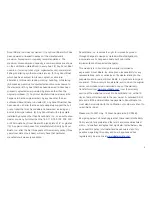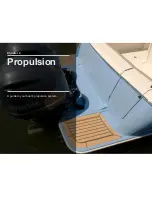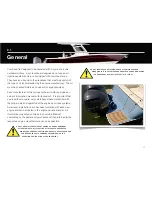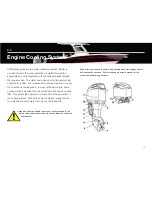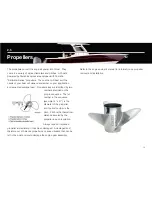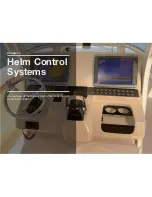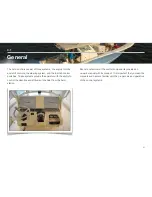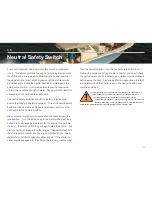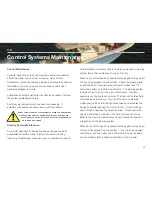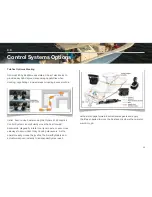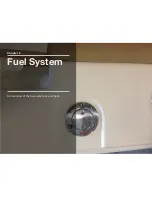
It is extremely important that the boat is propped to run at or very
near the recommended top RPM with an average load.
If the top RPM is above or below the recommend range, the
propellers must be changed to prevent loss of performance and
possible engine damage.
Your boat is equipped from the factory with counter rotating
engines that are mounted to achieve quicker planing and
optimum performance. Therefore, the left rotation engine is
mounted on the port side of the transom and the right rotation
engine is mounted on the starboard side. You should make sure
that each propeller matches the rotation of the engine.
Note:
Before changing propellers to correct boat performance problems, be
sure other factors such as engine tuning, bottom and running gear growth,
etc. are not the source of performance changes. Always be sure the load
conditions are those normally experienced, before changing propellers.
Your boat was shipped with propellers that typically provide
optimum performance for your boat. However there are factors
that can a
ff
ect performance and propeller requirements. Some
are as follows:
•
You should be sure the load conditions are those normally
experienced. If the boat ran in the required RPM range when it
was new and you have not added any additional gear or heavy
equipment and have not damaged the propellers, there is a good
chance the propellers are not the problem.
•
The addition of heavy equipment like life rafts, additional
coolers, etc., will cause additional load on the engines.
Consequently, di
ff
erent propellers may be required.
•
Outboard engines can be damaged and the warranty void if
the boat is not propped correctly. Always consult your Scout
dealer or authorized engine service dealer when making changes
to the propellers or if the boat does not run near the top
recommended RPM.
•
Boats operated at high altitudes (above 2000 feet). Engines
operated at high altitudes will not be able to develop as much
horsepower as they do at or near sea level. Consequently,
di
ff
erent propellers may be required.
2.6
Performance Issues and Propellers
16
Summary of Contents for 320 LXF
Page 1: ...320 LXF Scout Boats OWNER MANUAL ...
Page 2: ...Chapter 1 Owner s Information Warranty Certification and Boat Information ...
Page 11: ...Chapter 2 Propulsion A guide to your boat s propulsion system ...
Page 32: ...Chapter 4 Fuel System An overview of the fuel system of your boat ...
Page 40: ...Chapter 5 Electrical System An overview of the electrical system of your boat ...
Page 54: ...Chapter 6 Fresh Water System An overview of the fresh water system of your boat ...
Page 59: ...Chapter 7 Raw Water System An overview of the raw water system of your boat ...
Page 65: ...Chapter 8 Drainage System An overview of the drainage system of your boat ...
Page 70: ...Chapter 9 Ventilation System An overview of the ventilation system of your boat ...
Page 73: ...Chapter 10 Exterior Equipment An overview of the exterior equipment on your boat ...
Page 83: ...Chapter 11 Interior Equipment An overview of the interior equipment on your boat ...
Page 88: ...Chapter 12 Safety Equipment An overview of the safety equipment on your boat ...
Page 99: ...Chapter 13 Operation A general guide to operating your boat ...
Page 124: ...Chapter 14 Routine Maintenance A guide to keeping your boat running in good condition ...
Page 147: ...Chapter 16 Appendix Reference documents logs and schematics for your boat ...
Page 154: ...153 ...
Page 155: ...154 ...
Page 156: ...155 ...
Page 157: ...156 ...
Page 159: ...158 ...
Page 160: ...159 ...
Page 162: ...161 ...







